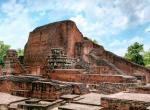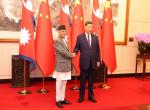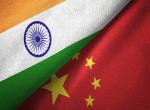As a gross generalisation, three factors shape the foreign policy of most countries: history, geography and capability. And each of these has decisively influenced Indian foreign policy, in different ways at different times. India’s power of attraction, the foundation of any country’s “soft power”, derives from each. India’s newly recognised global economic significance and potential greatly lends weight to the country’s international profile. Earlier, India’s regional concerns and geo strategic views had always been underplayed in the larger context not only by India herself, but, also by the west. The last couple of years have seen a significant shift in this, more so, in the last few months.
In seeking to improve the frayed ties with her neighbours, recently India has been experimenting with asymmetric diplomacy. From Nehru onwards, civilizational and other historic links were much emphasised in India’s declaratory neighbourhood diplomacy. It is only recently that India’s “pull” has become a strong one, (eliciting mixed emotions) with its economic progress, unmatched to date in most of the immediate neighbouring countries. The stereotypical image of underdeveloped, impoverished India has now been removed by the impression of a modern and dynamic economy attracting now foreign investments and workers from different parts of the world.
Nature of India’s Soft Power
In practice, India’s soft power remains weak for two primary reasons.
- Indian diplomacy has neglected soft power as an important tool of statecraft and has only recently understood the relevance of ‘cultural diplomacy’.
- Soft power cannot really exist without some initial hard power achievements.
One of the most eloquent proponent of India’s soft power, former Union Minister of State for External Affairs - Shashi Tharoor, has argued that past classifications of major power status were becoming archaic and that India had now become a great power mainly by the ‘power of example’ or in other words because of its ‘soft power’. His contention is that today it is not the size of the army or of the economy, but, the country that told the “better story” which would qualify as a global player. He also believes that India’s soft power has emerged until now independently of the government’s policies. In other words, a soft power by default, India has now to enhance its co-optive power.
Prime Minister Narendra Modi, seems to be doing exactly that.
The advantages of hard power such as military and economic resources are that they can be measured and compared, and their direct effects are more or less palpable. It is easy to compare the strength of Indian & Chinese armies and measure the GDP of both countries to determine who has better advantages. Since soft power is intangible and takes a long time to become visible, it is difficult to measure its actual impact.
India’s Soft Power Components
In the post-Independence period, India failed to make the most of its cultural ties to the Asian region. Indeed, its cultural diplomacy then was perceived as somewhat gauche in Asia, insofar as it seemed to suggest that some south-east Asian countries were India’s “cultural colonies”. Moreover, Indian foreign policy initiatives rooting for Asian solidarity did not gain traction because south-east Asian nations had no desire to become subordinates to high-minded notions of Asian regional unity; nor did they agree with the claim that India was the “mother of all civilisations” in Asia. This was also the period when the Asian Tigers did not include India.
India needs to look at integrating the following components in building her soft power capabilities. These components have already contributed in tremendous ways to fostering relationsbetween India and her various neighbours. It is time now for a more structured approach.
Look East Policy: India has a long history of civilizational and cultural links with countries in Central Asia, South-East Asia and the Middle-East. Its riches have attracted traders and travellers for thousands of years. Buddhism spread from India to China and beyond, leading to a sustained exchange of ideas since ancient times. The proposal by India to rebuild the once internationally famous Nalanda Buddhist University in partnership with China, Japan, South Korea and Singapore serves as testament to those historic cultural ties. In the last decade Indian diplomats have sought to improve relations, albeit weakly, through the ‘Look East’ policy based on the same cultural ties. Recognising the need to shed earlier notions of cultural superiority, Indian engagement has become more pragmatic with South East Asian countries, relying as much on contemporary art forms as those relating to its heritage.
In south-east Asia, efforts are afoot to promote networking of universities, co-operating on accreditation, exchange of students and professors, joint research projects in a variety of subjects. India has been giving scholarships to a large number of Asian students to encourage them to study in Indian universities. The Indian government also helps in the establishment of chairs related to India and its languages in universities of south-east Asia. The Indian diaspora that accounts for an estimated 6.8 million people of Indian origin is a crucial actor in wielding influence over the region. The government has actively sought to engage this community in being brand ambassadors and also encouraging them to remit back into the Indian economy. Prime Minister Narendra Modi has been able to connect with this diaspora in a way that no other elected leader has done before.
Tourism: The flow of tourists between Asia and India has increased both in absolute numbers and in relative terms in recent years, although not yet dramatically. Tourism, particularly religious tourism, is a potentially greater asset in India’s relations with Asian nations. Buddhist tourism, already a major draw, has significant potential to generate further arrivals from Asian markets. The launch of the special luxury train doing the Buddhist tourism circuit is a testimony to that. However, a lot has to be done in terms of value for money proposition available in other Asian tourist destinations, and the minimum requirements of comfort, safety and facilities that tourists have come to expect during their travels abroad.
Often overpriced, sub - standard hotels, combined with at times chaotic local conditions for tourists, and unsympathetic state bureaucracies in charge of many tourist sites, are hardly the Asian ideal for family holidays, even when the archaeological and other attractions themselves are stupendous. A convenient, clean, hygienic and well connected railway network can do wonders in terms of contributing to the success of tourism in the country. The scope to develop India as a destination for adventure tourism, sporting vacations and family holidays involving eco, rural, farming & plantation tourism is unparalleled. Given the variety of resources available for such development, India can quickly move into a different league of tourism altogether. However, the issues mentioned above must be addressed on a war footing, the “Incredible India!” conveyed in the awesome Indian tourism promotional campaign is destined to remain in reality the “incredibly inconvenient and expensive” India not only for many Asians, but for the locals too.
Bollywood: Thanks to satellite TV and internet, Bollywood movies have reached a growing global audience that has become increasingly familiar with Indian society and culture. India’s film industry, popularly dubbed ‘Bollywood’, is probably the largest and farthest reaching medium for Indian culture. It is today the world’s largest film industry, surpassing Hollywood with an annual output of over 1000 movies. However, this huge industry has not been harnessed effectively to make it part of the soft power approach. While scholars of soft power studies are able to link American popular culture with the US’ ‘co-optive’ power, the effects of the globalisation of India’s diverse culture are not so explicitly political. For example, unlike Hollywood’s approach during the Cold War, Indian films have never really promoted a certain model for political and cultural development.
The Information & Broadcasting Ministry can openly engagea few directors & actors in a dialogue where their inputs can be sought to make movies showcasing India’s strengths. While the world loves entertainment pot boilers, we also should have classic movies that show case the unseen aspect of India. More movies like Bhaag Milkha Bhaag, Manjhi, Iqbal, Lagaan, Lakshya all elevate the talent we have to a different level.
Political Legitimacy: In a world awash with conflict stemming from failure to generate unity within nations, India’s success in weaving together so many ethnic, religious, caste and other strands within its society is a singularly strong advertisement for its exciting national experiment. This is despite the frustration in fighting economic & social inequality. I go back to quoting Shashi Tharoor, who said, “Hard power without soft power stirs up resentments and enmities; soft power without hard power is a confession of weakness”. This description easily applies to India, as we seek to attain and to project globally pluralist diversity and tolerant secularism.
The enduring nature of Indian democracy was showcased when the abject failure of Indira Gandhi’s period of emergency rule, 1975-77 was decisively repudiated by the electorate in the Parliamentary elections thereafter. One of my professors from my alma mater, S D Muni, in a useful survey of the democracy dimension in Indian foreign policy, examines why the promotion of democracy has not evolved as a central theme of India’s international relations, possibly because of its earlier orientations: “Some analysts have attributed this to India’s policy of non-alignment which drew its rationale from anti-colonialism and anti-imperialism”, in connection with which “democracy promotion might have breached the solidarity of the anti-colonial and anti-racial movement led by India under the umbrella of non-alignment”. He quotes Prime Minister Atal Behari Vajpayee in 2001 as stating: “The shape of our new world order will be determined by the success of pluralistic democratic societies in destroying the ideology of bigotry and hatred which drives terrorism”. However, we have not wavered from our philosophy and stand that democracy cannot be imposed from the outside, it has to be part of the internal governance process.
India has joined in a number of multilateral democracy promotion forums, including the Community of Democracies of which it became a founding member in 2000. Despite our important democratic achievements, New Delhi had historically shied away from promoting democracy abroad, but since 2000 we have expanded our activities for the development of democracy abroad, notably in coordination with the international community. In 2005, India joined the UN Democracy Fund and contributed $25 million to it, making it the second biggest donor after the US ($38 million). India’s activities mainly include electoral assistance and programs to strengthen the rule of law. Interestingly, at the regional level, India has linked development assistance with projects of democracy promotion as in Afghanistan. The Afghanistan example is interesting because, while India has direct national interests at stake in the stability of that neighbour, we have deliberately refused to send any military mission and instead pursued a soft power strategy to gain Afghan goodwill by delivering $1.3 billion in economic and logistical assistance. Since 2001, India has concentrated on the reconstruction of Afghanistan through aid for building infrastructure like dams and roads and providing scholarships for Afghan students.
Work In Progress
The Indian government’s efforts have helped promote a new and modern image of India abroad. The last decade has seen India as a hub for international firms that are making long-term productive investments in the country. Simultaneously many aspects of Indian culture like music, food, style and religions have become fashionable in many parts of the world. However, since we did not have any meaningful public diplomacy program until recently, it is not yet perceived as a political and societal model in other countries.
However, it seems that Prime Minister Narendra Modi and few others in the government have realised the importance of telling a “better story”. India will have to use its soft power in a more systematic and planned manner. This process will most probably take time as it will require a domestic debate on how to balance national interests and political values. The resolution of this debate will determine how India finds a right mix between soft and hard power in order to achieve real influence, or what Joseph Nye, has termed ‘smart power.’ For India to continue to be an attractive power, and most importantly for it to present a compelling development model it will also need to continue to improve its internal economic performance. Llack of proper physical infrastructure, constraining regulations, large and inefficient bureaucratic structures and the perception of massive corruption have all deterred major investors from either coming in or expanding massively.
India’s image as an appealing smart power will depend on how effectively the present government will knit and weave the various components of hard and soft power, focus on inimical growth models, and continuation of strong democratic principles & become an equitable & efficient society.
References :
- Tharoor, Shashi (2009): “Indian Strategic Power: Soft”, Global Brief, 13 May (http://globalbrief.ca/ blog/2009/05/13/soft-is-the-word/).
- Muni, S D (2009): India’s Foreign Policy: The Democracy Dimension (New Delhi: Cambridge University Press).
- Nye, Joseph (1990): “Soft Power”, Foreign Policy, No 80, Autumn.
- Abraham, Itty (2007): “The Future of Indian Foreign Policy”, Economic & Political Weekly, 42 (42): 4209-12.,
- Acharya, Alka (2008): China and India: Politics of Incremental Engagement (New Delhi: Har-Anand).
- Deware, Sudhir (2006): India and South-east Asia: Towards Security Convergence (Singapore: ISEAS Publications).
(Uma Sudhindra is a current affairs analyst, with a focus on domestic & global politics & defence. An alumnus of Fergusson College and JNU, she has been writing about international relations, political systems and the humane aspect of armed forces)
Published Date: 8th December 2015, Image Source: http://www.campaignbrief.com
(Disclaimer: The views and opinions expressed in this article are those of the author and do not necessarily reflect the official policy or position of the Vivekananda International Foundation)









Post new comment